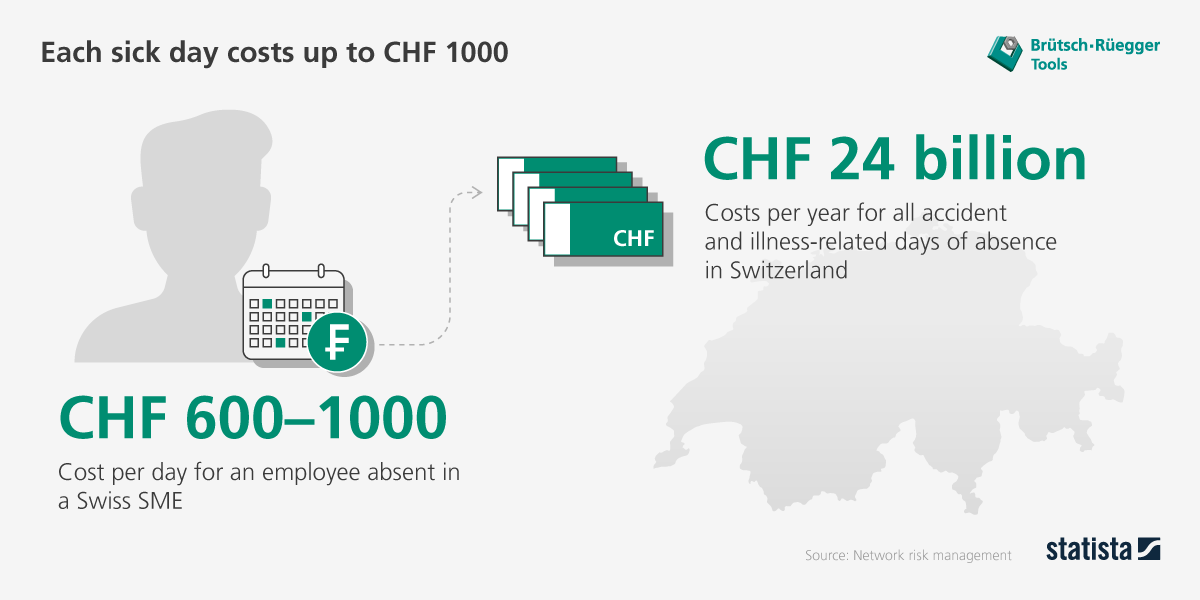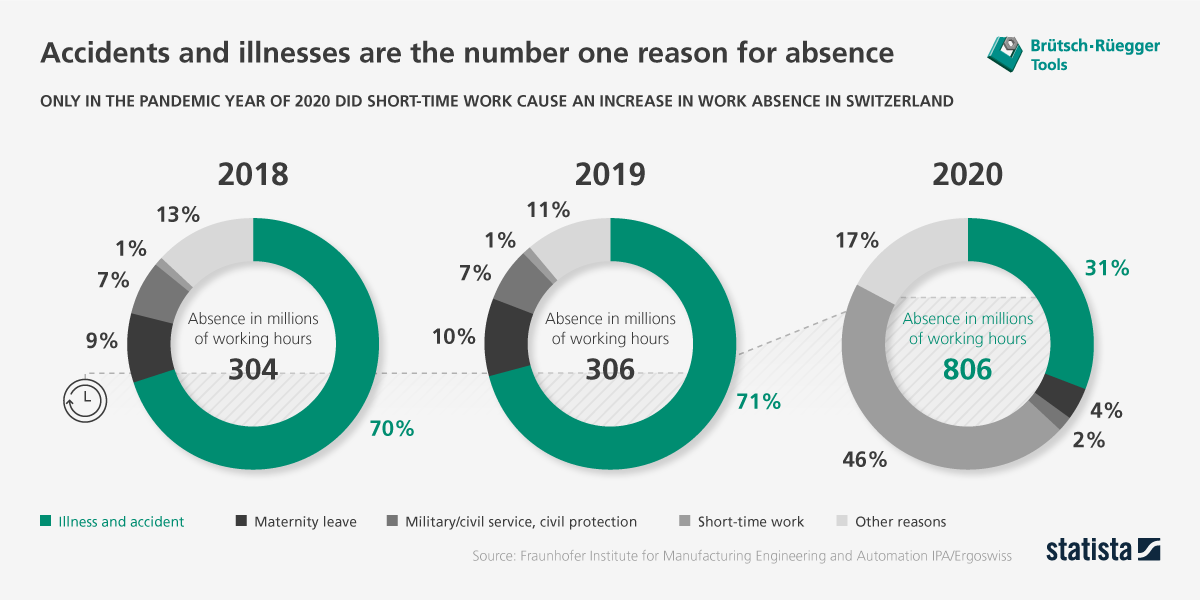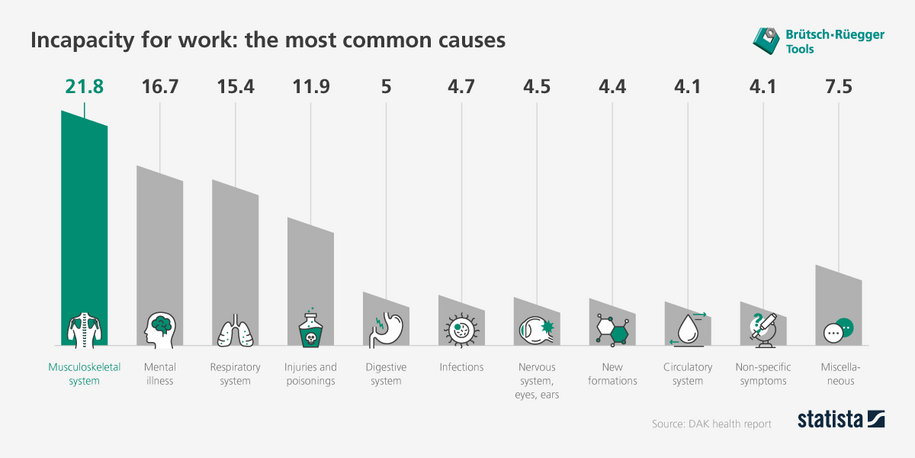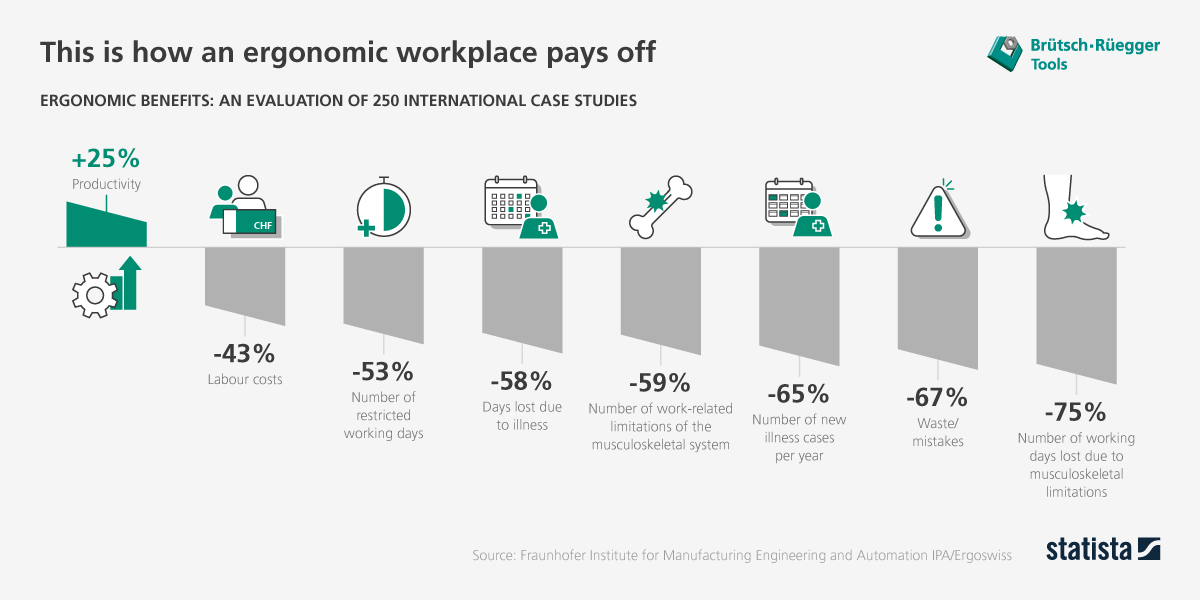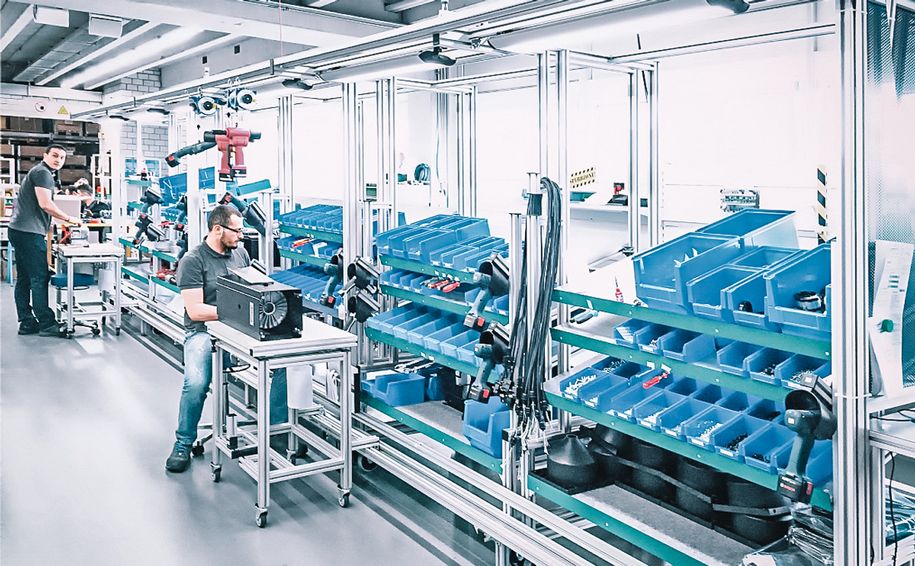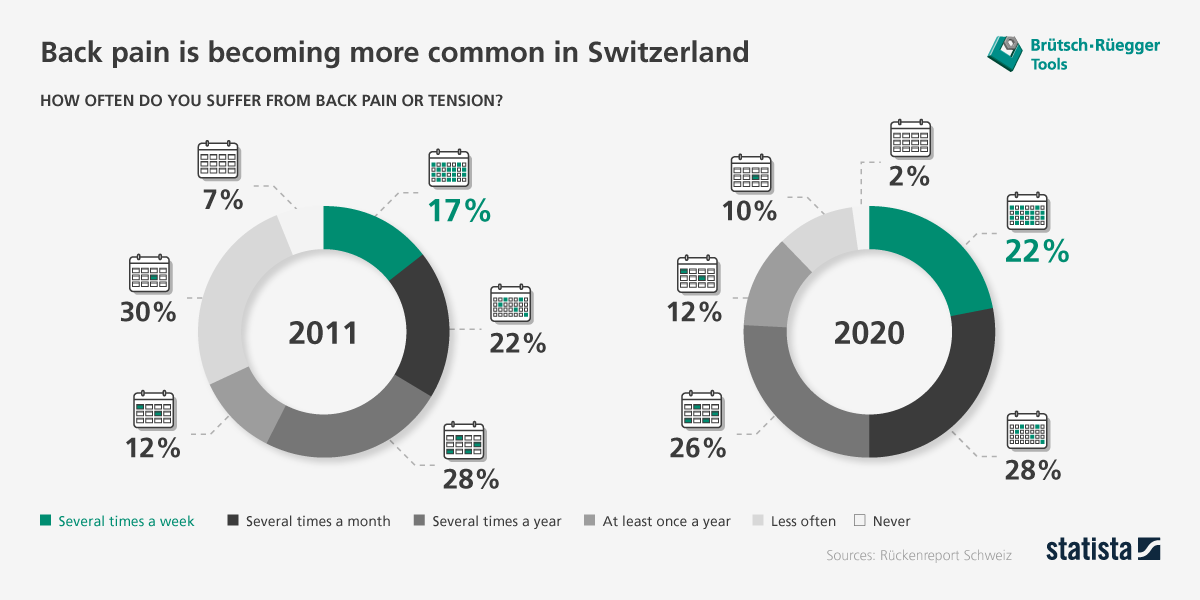24 billion per year! Lowering the costs of illness and accidents
Lost employee days cost Swiss companies more than CHF 30 billion per year — certainly a reason to act: Counter-measures are being taken in the Swiss MEM sector by the Brütsch/Rüegger Tools LEA (Learning Centre for Ergonomics and Workplace Design), which is currently celebrating its 20-year anniversary.
Illnesses and accidents are the number one reason for workplace absences, costing CHF 24 billion per year, or 77% of total absence costs. Only in the pandemic year of 2020 did short-time work cause an increase in work absence in Switzerland.
As early as the 90's, Otmar Wittensöldner, founder of the LEA, was troubled by the neglect of health and safety in the workplace. An above average number of days lost due to avoidable accidents or health damage was simply written off as "unavoidable". Far too little attention was paid to the causes. "At that time, courses on optimising workplaces did exist, but they were just dry theoretical lessons", recalls the now retired ergonomics specialist. Accident statistics presented in the lessons were quickly forgotten and only rarely were ideas implemented in the participants' own companies.
Practical seminars and workshops
The Learning Centre for Ergonomics and Work Design (LEA), set up by Otmar Wittensöldner, has been operated by Brütsch/Rüegger Tools in Urdorf since 2016. The LEA uses modern learning stations to teach participants the essentials of workplace design and ergonomics.
The three coaches, Reto Gruber, Sergej Steiner and Ilija Calusic, ensure that all work is carried out as safely and healthily as possible. They inspect, discuss and optimise workstations and entire production lines, resulting in greater efficiency and increased productivity every time. It's no wonder that the practical seminars and workshops (only in German) also form a permanent part of training courses from renowned Swiss institutes such as the Swissmem Academy, the sfb, the BZWU and the WZR.
In order to put an end to "paper exercises", Otmar Wittensöldner and his specialist teaching staff decided to put action-oriented learning into practice in 1998. Using an old Sulzer building in Winterthur, he began by setting up a training centre as part of the Swissmem Executive School, where the participants had to set up practical workplaces with ergonomically suitable equipment and facilities. The young managers had to reflect on their own experiences before formulating concrete implementation steps for their area of responsibility, which they could implement in their company.
20 Years of LEA
Three years later, Otmar Wittensöldner had set up an association, and the Learning Centre for Ergonomics and Workplace Design (LEA) was established in Bergdietikon. This year, the centre is celebrating its 20-year anniversary. Over the years, the course programme has been continuously expanded and new technological developments have been incorporated. "When I first started doing this, many people didn't even know that tools and equipment were available for left-handed people", says Otmar Wittensöldner with a smile. Today, however, a wide range of equipment is available to facilitate the a wide variety of work processes and to protect against potential accidents — a glance at our ToolShop confirms this.
"In general, jobs in industry have become more employee-friendly", continues Otmar Wittensöldner. Better equipment enables operations to be accident-free and more rational. Automated devices relieve personnel of physical strain, while warning systems and emergency stop mechanisms help prevent accidents.
Big potential still exists
Nevertheless, the fundamental challenges have remained the same to this day. In many places, the biggest hurdle is convincing management of the need for health and safety improvements. There is still a false assumption that the amount invested in ergonomics and workplace design does not pay off. Slowly, more and more executives are discovering that up to CHF 100,000 can be saved per year in a SME with modern facilities. Have you read our previous report on healthier, faster and better value working?
"Even at the time, we said that a lot could be achieved with little effort". However, awareness is only just beginning to properly develop, according to the expert — perhaps because the entire process chain is now being considered: Nowadays, the specialists at LEA not only optimise work processes from one workstation to the next, but also trim entire production chains for the highest possible efficiency. Reto Gruber, Lean Consultant at Brütsch/Rüegger Tools, and his team are supporting more and more companies in including lean management in addition to ergonomics and workplace design. After all, workers are a company's biggest asset, and they and their health must be taken care of.


